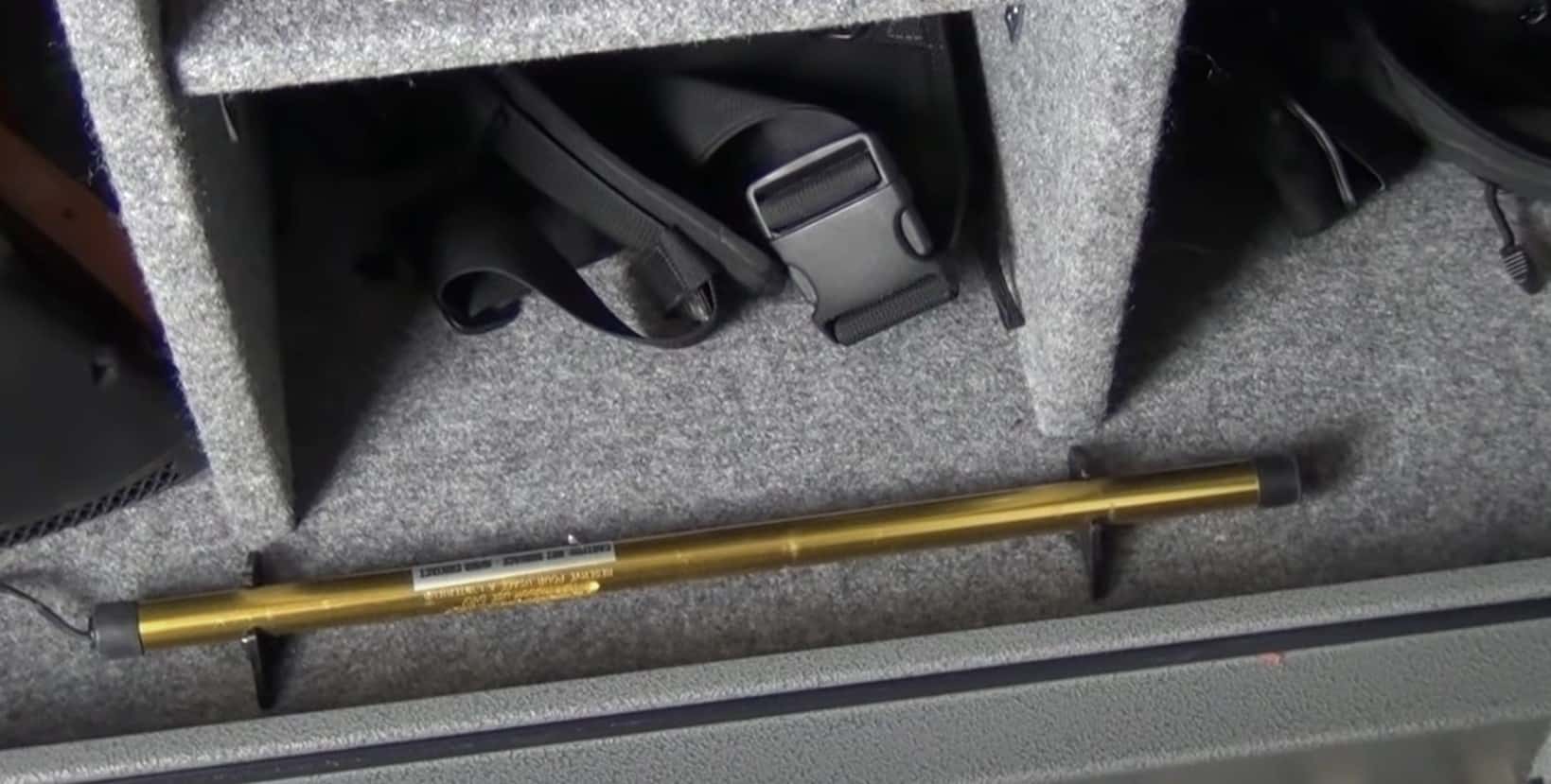How To Install a Dehumidifier In Your Gun Safe?

Humidity is the single most damaging factor to guns, ammo, and shooting gear. It can cause rusting and corrosion and even lead to mold and mildew growth. If you store your firearms in a gun safe, installing a dehumidifier inside can help prevent these issues.
Some people will argue that humidity would not be an issue if you keep your guns in a temperature-controlled environment, but it’s important to note that the temperature inside of a gun safe fluctuates depending on the season.
A dehumidifier also helps control the humidity level in your gun safe, which can be important for storing ammunition as well. In addition, you should also make sure that your gun safe has a hygrometer installed inside it so you know the humidity levels in there at all times.
This will allow you to know when it’s time for maintenance or when you need to replace the desiccant dehumidifier with a new one. Now that’s out of the way, let’s learn how to install a dehumidifier in your gun safe.
How To Install A Dehumidifier In Your Gun Safe?
The installation process of a dehumidifier in your gun safe is really simple. All you have to do is find a place for it, turn the power on, plug it in, and set the desired humidity level. While it sounds easy, and most of the time it is, there are some additional steps you will need to follow.
Should You Put A Dehumidifier In A Gun Safe?
You can remove moisture and humidity from your immediate surroundings with a dehumidifier. In order to be completely dry, it should be able to absorb all moisture from every region of the safe.
If constantly exposed to moisture for too long, most models on the market are made of metal and are prone to rust and corrosion. You may also notice some rust or chipped parts on your guns after prolonged exposure to moisture.
Dehumidifiers can extend the life of your guns and shooting equipment. Some of them have rechargeable batteries. It also keeps your guns and gear in great condition, as well as keeping the inside of your gun safe smelling fresh.
How to Choose The Right Gun Safe Dehumidifier
A safe is commonly equipped with one of two types of dehumidifiers. Bead and rod dehumidifiers are the two most popular choices.
Rod gun safe dehumidifiers work similarly to silica gel dehumidifiers, but they have very different working principles. The choice is up to you and what works best for your gun safe, your shooting gear, and you.
The silica gel models can be stored anywhere in your gun safe since they do not require electricity. Similar to the silica gel packs that are found on shoe boxes, they absorb any moisture present in the air, preventing it from being damp.
Rod dehumidifiers are electric devices that heat the air inside gun safes. It works similarly to a silica gel dehumidifier, except that it removes moisture more effectively and prevents damage to the gun.
How Many Dehumidifiers Should You Use?
Your gun safe’s size will determine how many dehumidifiers you will need. You may only need one, depending on your needs. You might want to consider using two or more dehumidifiers if you have a large safe that has many guns inside.
If you want to measure the humidity in your safe, make sure it’s empty first, then measure it again once you’ve installed one model. After you have put in your valuables and shooting gear, you will have an idea of how many gun safe dehumidifiers you need.
What Is The Best Place To Put A Dehumidifier In A Gun Safe?
Dehumidifiers and desiccant models come in a variety of sizes and types, which will affect the best place to place them inside your gun safe. It doesn’t matter where you put it in your gun safe; silica gel dehumidifiers will be effective. They work the same no matter where you put them.
A rod works best if it’s on the ground of the gun safe. By doing this, the hot air can rise and absorb the humidity from the air inside the gun safe. Also, see if it’s near your home’s power line, as you will need to connect the dehumidifier rod.
Gun Safe Dehumidifier Safety Precautions Before Installation
Before you get a dehumidifier for your gun safe, here are some things you should already know.
- You shouldn’t use them outdoors, since they are meant for indoor use.
- Water or contact with liquids should not be used to immerse the device, plug, or cord.
- When flammable fumes or explosives are present, avoid using them.
- If the cord is damaged, do not use them.
- If you are installing or handling the product, ensure that it is unplugged.
- The plug included with the product should not be used on any other device.
- No other plug should be used on your product.
How to Install A Dehumidifier Rod in a Gun Safe
Gun owners often use rod-type dehumidifiers because they remove moisture and prevent rusting of their shooting gear. The rod vents the heat out along with the moisture, which rises up with the air. Rod-type models are easy to install. Below are the instructions:
Ensure that a good airflow exists between the firearms, the bottom of your desk gun safe, and the top of it by choosing a location where the contents and your shooting gear won’t get in the way.
Disconnect the dehumidifying rod from the electric cord. The rod should be placed on the floor-bottom of the safe, towards the front. Connect the electric cord to the rod through the hole in the safe’s back. If there isn’t a hole, you may need to drill one.
The rod should work perfectly once it is turned on. Make sure the electric dehumidifier is working properly and perform some scheduled maintenance so that it stays in working order.
Step By Step Guide On Installing An Electric Gun Safe Dehumidifier
You should start by identifying all the parts before you begin installing. Ensure that your dehumidifier comes with a manual that explains how to use it.
Ensure that the surface you will be working on is dry and level before you begin.
Step 1
Start by laying the absorbent horizontally and as low as you can. Run the cable through the wall. Push the cord to the outside through the wall from the inside.
Near the bottom of most gun safes is an electrical access hole. Most of the time, it’s in the back.
Step 2
In the case of a gun safe that doesn’t come with an access hole, you will need to drill one. You may need to route the power cord through the wall if the gun safe has an internal outlet.
Next, install the anchors that hold the rod to the wall. The rod should be mounted horizontally and low to the wall.
Step 3
To avoid causing damage to the hinges or locking lugs:
- Check that the rod will not interfere with any of them before you proceed.
- Screw the clips into the interior using the included screws.
- Once the clips are in place, snap the rod into them.
Step 4
Additionally, you should make sure the wire end is clean. Don’t split the wire. You’ll need to take off the back cover of the plug housing too.
Upon removing the cover, you will see two prongs. Make sure that the cord is as far inserted into the housing as possible by placing it inside the cavity with the prongs.
Step 5
Ensure the housing cover is completely closed before reinstalling it. Otherwise, the cord will get trapped in the plug housing. The end result will be that the rod should start working once you plug it into an electrical outlet.
Airflow Is Important When You Are Arranging Your Guns
The dehumidifier is only part of the solution if you place it where you want it. Another problem is the way the contents of the gun safe are allowed to pass through the air.
Ensure that the weapons are properly distributed. However, owning a lot of firearms and a biometric single gun safe won’t make this easy. Our recommendation is to select a larger gun safe than what you need if you haven’t purchased one yet.
You will be able to circulate air around your firearms with a larger and more spacious gun safe. It is not enough to place the dehumidifier in the right place. The air must also flow through the contents of the safe. A well-spaced line of guns is ideal.
Performing Maintenance
You can leave the dehumidifier to work day after day once you have installed the one you prefer. At the same time, you should also keep in mind that some maintenance may need to be performed on it.
After silica gel models have absorbed as much moisture as possible, they need to be dried out or reactivated. The beads will change color over time, so you will usually notice this.
Depending on the type of safe that you use and the level of humidity in your safe, the interval between maintenance checks will vary.
There is no way to know exactly how much time you will be able to use it for, but the manufacturer will provide you with an estimate.
Also, for car trunk gun safe owners, you should keep a checklist so that you know when maintenance needs to be done. Put a sticker on the safe, or somewhere where it’s clearly visible, and write down the date.
Dehumidifiers that use rods don’t need any maintenance. Even so, it’s a good idea to make sure it’s still working from time to time.
It’s All About Proper Placement
It is important to keep in mind that there are a couple of different hand gun safes to consider. After you choose which one to use, you will have to find a good location in your gun safe for it.
It is possible to install a silica gel dehumidifier pretty much anywhere. Regardless of where you place them, their performance will not be affected. It is a good practice to keep a few of these inside an under the bed gun safe.
It is best to place rod-style dehumidifiers on the floor of the safe. As a result, the heat can rise and remove the humidity from the air.
Using a rod will require connecting it to your home’s electrical supply. There is usually a small opening near the bottom of a gun safe that allows you to pass the cable through.
Final Words
Your gun safe built into wall can be dehumidified by simply installing a dehumidifier. Finding the right model is the most challenging part of this.
If you follow these guidelines and install a gun safe dehumidifier properly, your firearm will last a long time, as they will be well protected from harm caused by too much moisture over time.

